By Khairie Hisyam | Kinibiz
DECEMBER 21, 2015 8:00AM
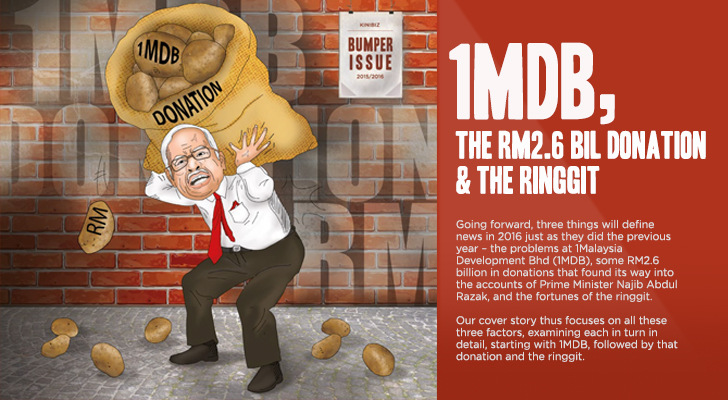
From its first ever deal seven years ago, controversial 1MDB has had a persistent association with parties from the Arab world. The pressing question, on account of its mysterious and self-harming decisions while benefitting these friends, is why.
________________________________________________________________________
When it was first set up as Terengganu Investment Authority (TIA) in early 2009, 1Malaysia Development Bhd (1MDB) set out to drive strategic development of national interests. After it was taken over by the federal government by mid-2009, however, the meaning of “strategic” seems to have taken an Arabic flavour.
The company’s board of advisors, for starters, count two prominent Middle Easterners as advisors – former Qatar prime minister Sheikh Hamad Bin Jassim Bin Jabr Al-Thani as special advisor while advisor Khaldoon Khalifa Al Mubarak is CEO of Mubadala Development Co, an investment company owned by the Abu Dhabi emirate in the United Arab Emirates.
And then there is also the dynamics brought by businessman Low Taek Jho, who is known for close connections both to the Middle East rich as well as to the prime minister’s family.
While Low, more commonly known as Jho Low, had never had any official role nor received remuneration from 1MDB in any form according to both his representatives and 1MDB, he seems intimately involved and instrumental in putting together 1MDB’s maiden joint venture – the first of many decisions linking back to the Arab world.
PetroSaudi and the departed billions
In September 2009, 1MDB hastily formed joint venture with privately owned conglomerate PetroSaudi International Ltd, inking an agreement just days after CEOs from both sides were introduced.
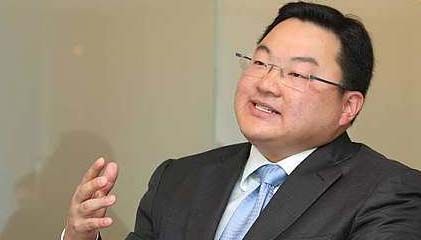 It was a strange circumstance considering Jho Low has no official role at 1MDB beyond offering advice by invitation of the company up to the point it ceased to be TIA and was renamed, his representative said previously.
It was a strange circumstance considering Jho Low has no official role at 1MDB beyond offering advice by invitation of the company up to the point it ceased to be TIA and was renamed, his representative said previously.
Meanwhile, the entire joint venture raises questions on the strategic value in lending money to a privately owned foreign company after a short-lived joint venture which in itself remains opaque (please see Part 6 of this issue for more about this deal).
The important players involved add an interesting dynamic to the perplexing deal. PetroSaudi is led by Tarek Obaid, a businessman who is known to be close to Saudi royal Prince Turki, the seventh son of the late King Abdullah of Saudi Arabia.
This royal connection seems to be played up during the rushed negotiations in the run-up to the hasty signing by end-September. In his email introducing the CEOs from both sides to each other on Sept 15, two weeks before they signed the joint venture, Jho Low invoked the name of the Malaysian prime minister as well as the Saudi prince.
“I am pleased to confirm as per YAB Prime Minister’s discussions with HM King Abdullah Al-Saud on furthering Saudi-Malaysia bi-lateral ties, together with YAB PM’s discussions with HRH Prince Turki Al-Saud, PetroSaudi and 1MDB is on track with respect to your USD2.5b JVC partnership. YAB PM has confirmed that he looks forward to the signing ceremony on 28 September 2009 to be attended by HRH Prince Turki Al-Saud [sic],” wrote Jho Low in an excerpt of the email published by Sarawak Report.
However, this deal is essentially a private one between 1MDB and PetroSaudi, the latter being a fully private entity with no real ties to the Saudi government, raising questions on why Jho Low’s email gives off a vibe that it was a government-to-government arrangement. It is not.
Questions also arise on how much influence the Saudi side had over the entire deal.
 Leaked documents and emails published by Sarawak Report – which had not been refuted as false by any party involved – indicate that talks were led by Jho Low and his associates, with 1MDB officials playing catch-up throughout. In turn talks began when Tarek introduced Jho Low to a UK businessman named Patrick Mahony who would later on join PetroSaudi as an employee.
Leaked documents and emails published by Sarawak Report – which had not been refuted as false by any party involved – indicate that talks were led by Jho Low and his associates, with 1MDB officials playing catch-up throughout. In turn talks began when Tarek introduced Jho Low to a UK businessman named Patrick Mahony who would later on join PetroSaudi as an employee.
These aspects of the deal paint a disturbing picture, given the shenanigans involved before and after the deal was inked, that the joint venture itself was perhaps conceived and planned by parties who are not officially part of the 1MDB organisation – which only raises questions on what their motivations were in devising the deal.
This also adds a shade of curiosity as 1MDB seems inclined towards more questionable deals with Middle Easterners in the years following this deal.
Billions to Aabar for nothing
Following the dodgy deal with PetroSaudi, in 2012 1MDB issued two US dollar bonds totalling US$3.5 billion to finance its power asset purchases (see Part 3 and Part 7 of this issue). Here 1MDB again went against its own interests involving a Middle Eastern outfit.
The bond issuances were co-guaranteed by the International Petroleum Investment Co (IPIC), which is an Abu Dhabi government investment vehicle set up to invest in energy and energy-related industries globally.
This raised eyebrows as, being wholly owned by the Ministry of Finance (MOF) and by extension the Malaysian government, 1MDB already had sovereign backing for the bonds.
In any event, for the co-guarantee IPIC received two things in return. First, it was allowed to keep RM4.25 billion of the nett bond proceeds as refundable security. That comes to 38% of the RM11.67 billion raised.
Second, its subsidiary Aabar Investments PJS was granted options to subscribe for up to 49% equity stake in Powertek Investment Holdings, which houses the power assets 1MDB bought from businessman Ananda Krishnan (see Part 7 of this issue).
Since the options expire after 10 years, one viable option would have been to wait out the period if 1MDB did not have any urgent reason to extinguish them. It would be reasonable to presume that Aabar would give prior notice if it ever intends to exercise these options, giving 1MDB some time to decide what to do in that scenario.
Abu Dhabi and TRX
After the bond issuance and the options granted to IPIC’s Aabar, 1MDB sealed another deal with the Abu Dhabi investor in 2013. As with the co-guarantee and the Aabar options, the deal seemed unnecessary, adding to the mysterious intimacy of Middle Eastern interests in 1MDB dealings.
On March 12, 2013, Malaysia and Abu Dhabi announced a partnership worth RM18 billion to promote new economic initiatives to spur billions of ringgit in sustainable, long-term investments in Malaysia.
“The partnership will focus in investments in important high-impact projects vital to the long-term economic and social growth of Malaysia,” read a press statement on 1MDB’s website dated March 12.
“Separately, Abu Dhabi is moving ahead to provide the required capital for the multi-billion ringgit Tun Razak Exchange (TRX) development, making it the first major multinational anchor investor for Malaysia’s new growth nucleus,” it said further.
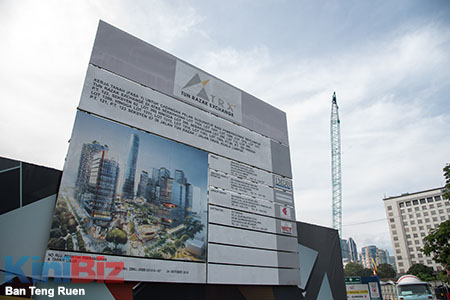 1MDB previously estimated TRX will generate some RM26 billion in gross development value (GDV) and create 40,000 new job opportunities for knowledge workers. It is expected to further create up to half a million new jobs via multiplier effect by the time it is fully completed.
1MDB previously estimated TRX will generate some RM26 billion in gross development value (GDV) and create 40,000 new job opportunities for knowledge workers. It is expected to further create up to half a million new jobs via multiplier effect by the time it is fully completed.
That 1MDB needed Aabar to anchor TRX and provide capital is strange. 1MDB had previously acquired the TRX land cheaply from the government and seems awash in cash at the time, based on its annual accounts, following its previous borrowing spree.
For example its annual accounts for the 2014 financial year ended March 31, 2014 (FY14) show a cash pile of nearly RM4 billion deposited with various banks, earning a meagre interest of 0.68% per annum. In FY14 1MDB also invested RM13.4 billion in borrowed money at various places including the Cayman Islands for only 3.3% annual return.
The returns from these roughly RM17 billion pale in comparison to 1MDB’s borrowing costs, with interest rates ranging from 5% to as high as 18%.
In turn the question arising is why 1MDB did not put its billions to work at TRX instead, where development returns would likely be more lucrative. This way it need not have brought in a foreign investor who would be taking away some of its potential profit in exchange for investment.
And the underlying question is why 1MDB needed to bring in Aabar to provide capital when it clearly had the cash to provide capital itself.
Is 1MDB chief conflicted?
In the trail of events involving the Aabar options, an interesting connection emerges that raises the question of potential conflict concerning 1MDB chief Arul Kanda.
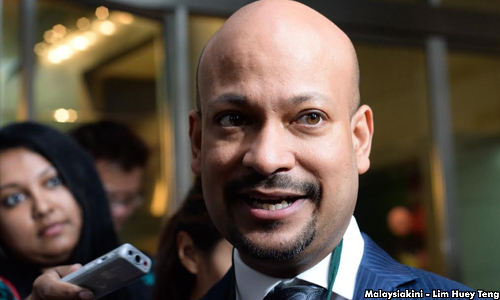 Arul joined 1MDB from Abu Dhabi Commercial Bank, where he was an executive vice-president and also head of its investment banking division. The same bank is reportedly among the five foreign lenders for 1MDB’s US$975 million loan as the second tranche of payment to extinguish the Aabar options.
Arul joined 1MDB from Abu Dhabi Commercial Bank, where he was an executive vice-president and also head of its investment banking division. The same bank is reportedly among the five foreign lenders for 1MDB’s US$975 million loan as the second tranche of payment to extinguish the Aabar options.
Notably when 1MDB took the US$975 million loan from the consortium of banks that included Abu Dhabi Commercial Bank, Arul was still employed at the bank. The question that arises is whether Arul was involved in Abu Dhabi Commercial Bank’s part of the loan to 1MDB.
Casting complications on the matter is that Abu Dhabi Commercial Bank is majority owned by a unit of the Abu Dhabi government while IPIC is wholly owned by the Abu Dhabi government.
This poses more questions on whether Arul was involved in dealings related to 1MDB before he joined the latter and whether his intimacy to the Abu Dhabi side would hurt 1MDB’s interests, given the various deals in place between both sides.
IPIC, from partner to white knight
Interestingly part of Arul’s strategy to turn things around at 1MDB insofar as its debt pile goes has seen involvement with IPIC again. In essence, IPIC is assuming a sizeable chunk of 1MDB’s debt in exchange for assets in a deal expected to reduce 1MDB’s debts by RM16 billion, said Minister Of Finance II Ahmad Husni Hanadzlah on May 29, 2015.
This followed the signing of a binding term sheet by IPIC, its subsidiary Aabar, 1MDB and the MOF on May 28, 2015, according to IPIC’s filing to the London Stock Exchange (LSE) on June 10, 2015 which disclosed the terms of the binding term sheet.
Following the signing, IPIC extended US$1 billion to 1MDB which the latter used to repay a bridging loan of US$975 million, which was taken out to extinguish options granted to IPIC’s Aabar as examined earlier in this article. The loan was originally due in September but jittery lenders requested early settlement.
This US$1 billion is not a loan nor will it involve 1MDB assuming further debt, said Arul on May 30, 2015. “It is an initial payment as part of a broader agreement to comprehensively address the various financial asset and liability transactions between IPIC, Aabar and 1MDB,” he said.
Other terms of the binding term sheet stipulate that from June 4, 2015 onwards, IPIC will assume all interest payments due under two 1MDB loans amounting to US$3.5 billion, which were guaranteed by IPIC in exchange for 38% of the proceeds and the options.
IPIC is also to receive a transfer of assets equivalent to US$1 billion in value by June 30, 2016, after which IPIC will directly take liability for all payment obligations under the two 1MDB loans as well as forgive certain financial obligations of 1MDB to IPIC.
Tony Pua
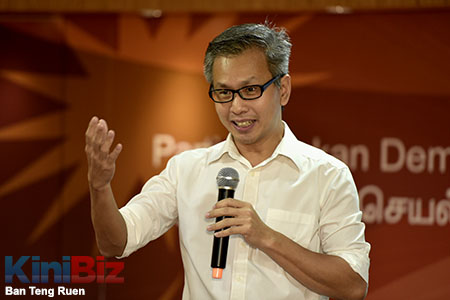 In a previous statement, Petaling Jaya Utara member of parliament Tony Pua claimed that through the deal the Malaysian government has provided a guarantee of US$4.71 billion (RM17.7 billion) to IPIC. “In the event 1MDB is unable to fulfil its obligations to transfer assets worth the same value to IPIC by June 30, 2016, the government will indemnify IPIC by assuming the obligations.”
In a previous statement, Petaling Jaya Utara member of parliament Tony Pua claimed that through the deal the Malaysian government has provided a guarantee of US$4.71 billion (RM17.7 billion) to IPIC. “In the event 1MDB is unable to fulfil its obligations to transfer assets worth the same value to IPIC by June 30, 2016, the government will indemnify IPIC by assuming the obligations.”
However, in a separate statement 1MDB denied that the government has provided a guarantee through the deal.
According to IPIC’s filing to the LSE, “1MDB and MOF have agreed to perform the obligations contemplated in the binding term sheet and to indemnify IPIC and Aabar for any non-performance, and vice versa”. At the time of writing the nature of these assets remain unclear.
Undue Middle Eastern influence?
Tracking 1MDB’s various deals with Middle Eastern interests over the years brings to light a number of troubling concerns. And they lead to one pressing question: why is 1MDB apparently acting against its own best interests in these deals?
In this respect the 2009 joint venture with PetroSaudi stands out. The deal was concluded in such a hasty manner that one cannot help but wonder why there is such urgency. Even more alarming is the fact that US$700 million of the US$1 billion 1MDB committed to the joint venture was transferred into an unrelated bank account.
There are also questions over why 1MDB subsequently decided it was a moneylender and lent more money to PetroSaudi after the joint venture was terminated. These have also gone unanswered, as have questions on why the joint venture ended as quickly as it was put into motion.
It stretches the imagination to see strategic value in lending borrowed money to a foreign entity when the borrowings were taken for strategic development purposes in the first place.
Viewed in light of the power assets options unnecessarily granted to Abu Dhabi’s IPIC in 2012 and subsequently cancelled at the cost of billions, these dealings appear in the best interests of the Middle Eastern entities while running against 1MDB’s own. That current chief Arul has intimate ties to Abu Dhabi adds to the perplexing situation.
And the emerging, troubling question now is why the Middle Eastern folk are so mysteriously alluring to 1MDB that it bends over backwards to include them in its investment decisions, even when the company does not seem to need them at all.
Yesterday: How 1MDB overpaid for its power assets
